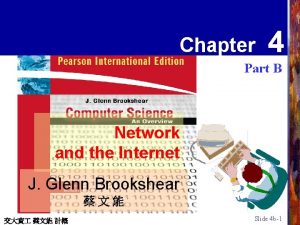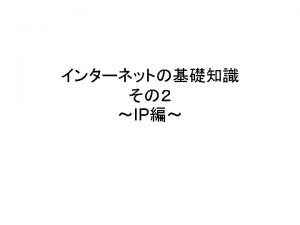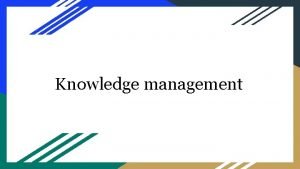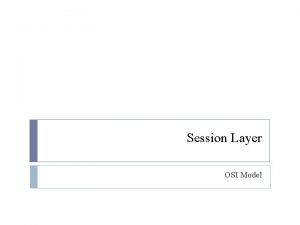KNOWLEDGE MANAGEMENT KM Session 34 Technical Access Layer










- Slides: 10

KNOWLEDGE MANAGEMENT (KM) Session # 34

Technical Access Layer Internet PUBLIC AT LARGE Cloud Extranet Intranet Groupwares Portal • News/Events • HR Information • Marketing • Production Information • E-commerce • Careers • Sales Information • Strategic Plans • Company employees ·Suppliers ·Vendors ·Partners ·Customers • Product Info information • Sales Info • Collaboration/ • Sales information Communication • Collaboration/ Cooperation

Technical Layers of KM System. . . 1 User Interface (Web Browser SW on each user’s PC) 2 3 Authorized Access Control (e. g. , Security, Passwords, Firewalls, Authentication) Collaborative Intelligence and filtering (Intelligent Agents, Network Mining, Customization, ) Knowledge-Enabling Applications 4 (Customized Applications, Skills Directories, Videoconferencing, DSS, GDSS Tools) 5 Transport (e-mail, Internet/Web Site, TCP/IP Protocol to manage Traffic Flow) Middleware 6 (Software for Network Management, Ssecurity, etc. ) 7 The Physical Layer (Repositories, Cables) Databases Legacy Groupware for Data Warehousing Applications (Document Exchange, (Data Cleansing, Collaboration) Data Mining)

User Interface Layer (1) • Tacit knowledge should be made available face-to-face, e-mail, or by other media • User interface design focuses on Consistency, Relevancy, visual clarity, Navigation, and Usability

Collaborative Intelligence and Filtering Layer (3) • Provides personalized views based on stored knowledge • Reduces search time for information • Intelligent agents search across servers to find the information requested by the client (user) • Intelligent agents arrange meetings, pay bills, and even wander through virtual shopping malls, suggesting gifts and so on

Knowledge-Enabling Application Layer (4) • Often referred to as Value-Added Layer • Creates a Competitive Edge for the Learning Organization • Provides Knowledge Bases, Discussion Databases, Sales Force Automation Tools, Imaging Tools, etc. • Ultimate Goal: To show knowledge sharing could improve the lot of employees

Transport Layer (5) • Most technical layer to implement • Ensures that the company will become a Network of Relationships • Includes LANs, WANs, Intranets, Extranets, and the Internet • Considers Multimedia, URLs, Graphics, Connectivity Speeds, and Bandwidths

Middleware Layer (6) • Focus on interfacing with legacy systems and programs residing on other platforms • Designer should address databases and applications with which KM system interfaces • Contains a cluster of programs to provide connections between legacy applications and existing systems • Makes it possible to connect between old and new data formats

Repositories Layer (7) • Bottom layer in the KM architecture • Represents the physical layer where repositories are installed • Includes Intelligent Data Warehouses, Legacy Applications, Operational Databases, and Special Applications for Security and Traffic Management

KNOWLEDGE MANAGEMENT SYSTEMS; LIFE CYCLE APPROACH
 Function of session layer
Function of session layer Osi session layer example
Osi session layer example Fig 19
Fig 19 Path of food from mouth to anus
Path of food from mouth to anus Secure socket layer and transport layer security
Secure socket layer and transport layer security Layer 6 presentation layer
Layer 6 presentation layer Secure socket layer and transport layer security
Secure socket layer and transport layer security Secure socket layer and transport layer security
Secure socket layer and transport layer security Secure socket layer and transport layer security
Secure socket layer and transport layer security Layer 2 e layer 3
Layer 2 e layer 3 Layer-by-layer assembly
Layer-by-layer assembly


















